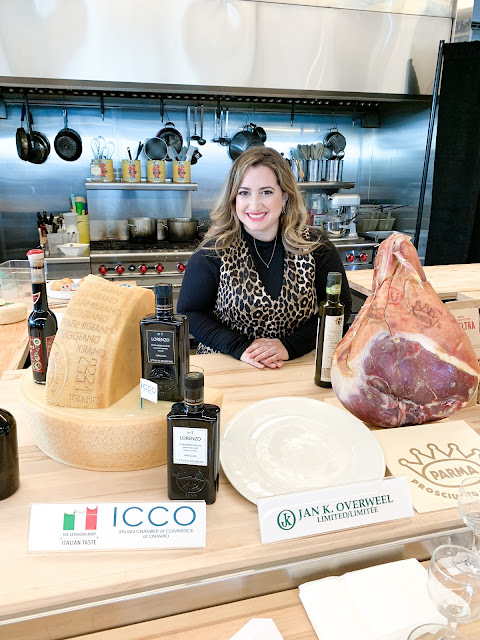June is Italian Heritage Month, a celebration of all things Italian in Canada and the world.
It may seem like an odd time to celebrate. In the midst of a pandemic that has already lasted months, recent acts of violence against Black people and the subsequent protests in both Canada and the US have consumed much of our media and our minds, and rightfully so.
There is an uncertainty in the air, uncomfortable feelings and mourning. But I think education of history, of culture, of past and current events is what helps us understand and appreciate what is happening in the world today.
And that's why celebrating different heritages, learning about cultures and ways of life is not only interesting but imperative.

One of the ways we can celebrate culture and heritage is through food. It's one of my favourite ways to learn.
Before the pandemic even started, I participated in a Masterclass at Faema in Toronto led by Italian chef Roberto Fracchioni. Let me tell you: I learned so much about Italy's food production, agriculture and land, as well as food regulations and designation.
Many people may not know that while I have an Italian last name and still practise many of the traditions and even understand the language somewhat, I'm 100% Canadian, raised by born-in-Canada parents. Losing our Italian heritage has been something that saddens me; we try and maintain what we can, but we, too, need to continue to learn about heritage.
Like me, interestingly enough, much of the food we're consuming and buying in stores has Italian roots, but may not actually be fully Italian. Did you know that? Designations like DOP: Denominazione D'Origine Protetta (or in English, Protected Designation of Origin) help to trace a particular food or food item all the way back to where it started. The trademark seal is used to distinguish these items from the rest and is treated as a sacred emblem, never to be cut off or removed.
Take prosciutto, for example. There are 8 different DOP Prosciutti in Italy, each one specifically relating to its roots: the region, the pigs, what they're fed, the salt content, air and time its cured. If you're curious, it's time to ask the questions. Talk to your butcher or grocer and ask where the products you're purchasing originate.
And speaking of origin, be wary of misleading or confusing products that claim to be something they're not. Just as you would inspect product labels on ordinary grocery items, look for wording like "Italian Style", "Product of Italy" or even "Made in Italy" when shopping.
 A label like "Made in Italy" means the product is 100% made and manufactured in Italy, while "Product of Italy" generally means a portion of that product was sourced outside of the country. It may still be a delicious item, but something to consider. "Italian style" products likely have no Italian origin.
A label like "Made in Italy" means the product is 100% made and manufactured in Italy, while "Product of Italy" generally means a portion of that product was sourced outside of the country. It may still be a delicious item, but something to consider. "Italian style" products likely have no Italian origin.Why is this so important?
- Firstly, you want to know what you're buying. It's being a responsible consumer.
- Secondly, every DOP product and every Made in Italy product has a story. Learning about the stories, the farmers, the history and ultimately, the food, makes you appreciate it much more.
- Thirdly, it's amazing to taste the difference in these products and be able to recognize there is a difference. It's the true Italian taste, and if you're lucky enough to have travelled to Italy, you'll agree -- there IS a big difference.
Chef Roberto Fracchioni hosts a variety of virtual cooking classes and Masterclasses through the year with the Italian Chamber of Commerce of Ontario. To learn more about them, visit www.italchambers.ca.



No comments
Post a Comment